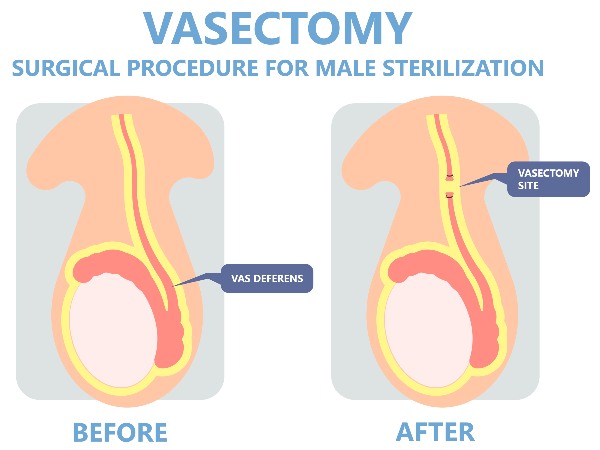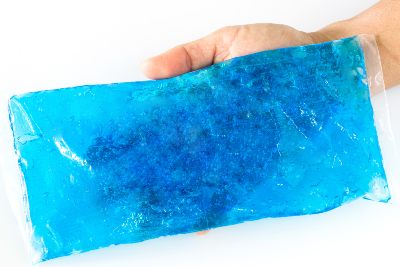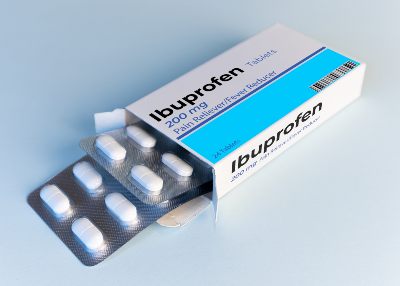SCALPEL FREE VASECTOMY BALLINA
Scalpel Free Vasectomy – A Patient’s Guide
Dr Arthur Proudfoot – FRACGP, BMBS, MACP, BA
What is a Vasectomy?
A vasectomy is a surgical procedure performed on males that cuts or blocks off the small tubes in the scrotum (called the vas deferens) so sperm is kept out of the semen, preventing pregnancy.
A vasectomy is a highly effective form of male contraception. After a vasectomy males can still have an orgasm and ejaculate.
There are two approaches to a vasectomy operation:
1. Open procedure method – One or two cuts (1.5 cm to 3 cm in size) are made in the front of the scrotum. The doctor will then cut and seal the vas deferens (the tube that carries the sperm) connected to each testicle.
The opening/s in the scrotum are then closed with stitches.

2. Scalpel-free vasectomy - The Scalpel Free Vasectomy technique or no scalpel vasectomy is the latest non-intrusive technique used to perform a vasectomy. One or two small punctures (2mm to 3mm in size) are made in the scrotum with fine sharp forceps and each vas deferens is cut or blocked as in the open procedure. No stitches are required for this method.
The result of either operation means that sperm can no longer reach the penis during ejaculation preventing pregnancy. The procedure takes about 20 to 40 minutes and usually happens under a local anaesthetic.
Vasectomy has no effect on the production of the male hormone testosterone hence sex drive, sexual arousal, sexual performance, orgasm, libido and masculinity are unaltered.
How does a vasectomy work?
The microscopic cells called sperm that fertilise an egg to cause pregnancy are produced in the male testicles. Sperm leaves the testicles through two tubes called the vas deferens, and mixes with other fluids to make semen.
The sperm in the semen may cause pregnancy if they enter the vagina and fertilise the female’s egg. A vasectomy cuts or blocks each vas deferens tube, keeping sperm out of the semen making the male sterile.
After a vasectomy, the sperm cells stay in the testicles and are absorbed by the body. Approximately three months after a vasectomy, the semen will most likely not contain any sperm, helping prevent pregnancy.
Most males will still have the same amount of semen, it just won’t contain sperm.
Vasectomies don’t change the way having an orgasm or ejaculating feels.

What is a scalpel free vasectomy?
A traditional vasectomy requires incisions or cuts of 1.5 centimetres to 3 centimetres (made by a scalpel) into both sides of the scrotum to access the vas deferens. This approach requires stitches to mend the holes made by the incisions.
Patient Pre-Operative Vasectomy Instructions
1. Please inform our team and Dr Proudfoot of your current medical history including any medication or natural supplements including:
- All medication including aspirin, warfarin or other ‘blood thinning’ medication
- If you have had previous surgery for undescended testes as a child or any surgery in the genital area such as hydrocele or hernia operation.
2. Ring and confirm your attendance 48 hours before the procedure.
3. At home, on the morning of the procedure shave the scrotum area.
4. Wear tight fitting supportive underwear (not boxers).
5. Have a light meal if needed before the procedure.
6. Immediately before coming in for the operation, please wash the genital area thoroughly with soap and warm water.
7. Though the operation is carried out under local anaesthetic a general relaxing agent is often used, you are advised to arrange transport or someone to take you home after the procedure.
Scalpel Free Vasectomy Ballina – Post-Procedure Information
Immediately after the operation
Following your procedure you can leave the clinic after a short rest. Please note the following advice:
- Do not drive home, arrange for someone to collect you, or use a taxi or uber.
- After your procedure, the local anaesthetic wears off after about 1-2 hours.
- Some discomfort or mild pain is normal during the first few days and occasionally some swelling develops.
- Care should be taken with washing for about 2 weeks.
We also advise that you avoid strenuous exercise, heavy lifting or driving long distances (continuous driving for 2hrs) for 1-2 weeks to minimise swelling and discomfort.
It is advisable to wear tight fitting underpants (bring with you on the day of the procedure) and continue to wear tight fitting underpants day and night for about 1 week.
Where the tubes have been cauterised and cut some scar tissue will form. This may be felt as a slightly lumpy, sometimes tender area just above the testicle. This is quite normal, but if you do become concerned about any unusual lumps see your GP.
Incision healing – There are no stitches to remove, there is only a small cut that will heal itself, although may gape open a little after a few days. You need only to seek medical advice if it is persistent, excessively smelly or inflamed.
Showering and bathing – Although the procedure area may be slightly bloodstained, it is better not to wash for 24 hours after the procedure. It is then best not to soak in a bath, but have a shower, letting the water run over the area. If you do not have a shower, then kneel in a bath and sponge water over the area.
Do not use excessive soap or shampoos and do not use talcum powder.
Important complications that you should be aware of include – Infection, excessive bruising (both common to any procedure, but rare) and can delay the healing process. Some men develop a chronic testicular pain syndrome, sometimes years later.
It is important that you must continue to take precautions against pregnancy until you have been given the all clear following the semen tests four months after the procedure.
Scalpel Free Vasectomy Ballina
Open weekdays from 8:30am to 5:00pm. Our team specialise in Scalpel Free Vasectomy. Dr Proudfoot will ensure you have detailed information about the procedure that is clear and easy to understand. At Ballina Vasectomy Clinic we commonly see patients from Ballina, East Ballina, Skennars Head, Alstonville, Wollongbar, Lennox Head, Bangalow, Suffolk Park, Byron Bay and surrounding areas.
Dr Proudfoot is a Fellow of the Royal Australian College of General Practitioners.




